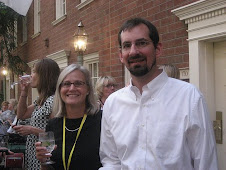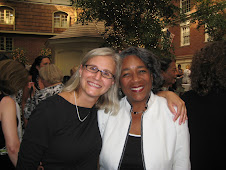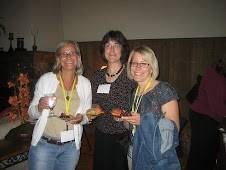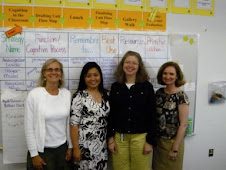Below is a brief summary of "Closing the Gap by Connecting Culture, Language, and Cognition" from Student Successes with Thinking Maps. Click on "post a comment" at the end of this entry to comment on the full article.
Yvette Jackson, the Executive Director of the National Urban Alliance, hopes to change teacher perceptions about underachieving students. NUA also hopes to bridge the cultural gap between students and teachers. Jackson and NUA believe that a shift needs to occur from what has to be taught (content) to how learning happens (process).
NUA believes in the following equation:
Learning = (Understanding + Motivation) (Competence and Confidence)
NUA believes that Thinking Maps are "essential tools in bridging the cultural gap between teachers and students" because they address the inter-related nature of culture, language and cognition.
NUA does acknowledge that Thinking Maps are one tool to give teachers a language to address the needs of underachieving students because they help eliminate textual blockers, both semantic and structural blockers. This mediation happens because Thinking Maps provide a clear language to discuss metacognition, and the maps become external memory patterns for students.
Thinking Maps are a common language that can be transferred across disciplines and grade levels.
Subscribe to:
Post Comments (Atom)







11 comments:
All right here goes.Page 57-first sentence.Maps are external memory patterns that are used to freeze their(students) thinking. I love it.I noticed that when a thinking map was used on Friday the presentation went faster and were to the point.Ask what kind of thinking you need to solve the problem then freeze it.I have a new idea. Ruth Mary
When everyone is working from a consistent frame of reference, communication is more efficient and, usually, more effective.
Hyerle's rationale reminds me of the importance of using a common language--which I think the NUA training and Thinking Maps do. We often spend much of our time "re-teaching" a concept only to discover that students knew it all along, just by a different term. (A similar thing happened before the six traits of writing were introduced; one of the best values of that program was the consistent K-12 language it introduced into writing instruction.)
One final thought: while students may be coming to us with experience using Thinking Maps in earlier grades, it may be helpful on occasion to reteach them anyway. With each passing year of experience, the level of sophistication which students may incorporate into their thinking should increase, so it makes sense to give them additional instruction in how to more fully take advantage of a strategy they already know.
As I've been in the CoP and while reading our assignments I keep coming back to my past experience with a "common language" program.
During my first year in teaching the science and language arts folks at Henry Sibley High School piloted a thinking skills curriculum that was intended for use across disciplines. The program hoped to develop a common language of thinking skills and instruction that were overtly taught to students in the first few weeks of their 9th grade year. Traditional content was set aside so that a crash course in the thinking skills curriculum could be presented.It had a heavy focus on inductive reasoning and the development of abstraction from sensory evidence.
The second year of the program I was able to participate in the use of the thinking skills as they expanded into the newly-developed American Studies course. Both the US History and American Lit teachers used the skills in their courses. The history and lit pairs also were able to share students in order to create unique blocking options. On a side note- I have great memories of teaming with Elizabeth Hillstrom (now Barniskis) in this program.
I loved the program and used the skills extensively in my history classroom. The common language was really great for developing rubrics for projects, essay, etc. Every kid had a very clear understanding of the meaning of conclusion, evidence and reasoning. When I scored a paper it was very easy to show a student that they had a great conclusion and adequate evidence, but lacked clear reasoning to link the two.
We also did a lot of norming exercises so that we were as close to united in our scoring as possible. It is really great to say to a kid who disagrees with your assessment, "I'll have Elizabeth score it and we'll average the two scores", knowing fully that there was not likely to be a significant difference in our scores!
Although the thinking maps are very different from the format that I taught under, there are many similarities (is this where you do a double bubble?) that make me want to learn more. Any time that learning and skills transfer across disciplines the students will be much more likely to learn.
"Reading is unlocking frozen thoughts and writing is locking frozen thoughts,"(55). Therefore, to unfreeze the reading it makes sense to first ask about the type of thinking that created the writing. Starting a topic with questions about the type of thinking as well as questions about previous knowledge, context, and audience makes good sense.
I have a general question for the group. Are NUA strategies intended to be culturally specific by targeting particular cultures with particular strategies, or are they intended to be culturally neutral? Is the assumption that minorities are not learning as well because non-NUA strategies are culturally biased and we need to introduce more cultural bias for balance, or is the assumption that the NUA strategies remove all cultural bias?
-Scott Woelber
Yvette Jackson certainly makes a good case for the use of thinking maps as a common language to connect culture, language and cognition. The results are impressive.
I was particularly interested in what she calls "learning blockers" or "things that obstruct the natural learning process, specifically, cognitive, language, and textual blockers. " From where I sit (health office), I often see "learning blockers" that are health related. Does the student have food? A bed? A safe environment? Access to health care? Someone that cares for them? Sleep? It is well supported by the literature, (and by my own oberservations) that these issues are "learning blockers". She (Jackson) may have these in mind but it seems to me to be a HUGE oversight not to at least touch on the health related issues in this chapter. I'm not so sure the answer to these "blockers" are thinking maps. Ann Little
Yvette's description of the lack of communication that happens between students and teachers as the "cultural gap" was very interesting. "What teachers sometimes interpret as students not wanting to learn is really more what Jabari Mahari (19980 describes as the 'out of sync rhythms between the students and their culturally different teachers'" (51). According to Yvette, students who resist learning are most likely just frustrated with the communication gap between themselves and their teachers. This frustration happens on both the side of the teacher and the side of the student. If Thinking Maps are indeed a way to successfully communicate with students in a common language, then I am excited to have the opportunity to work with them this quarter.
(the post above was left by Becky Albrecht)
From Elizabeth....
Eric- I, too, have fond memorieds of those days at Sibley. I have never seen more collaboration between teachers of different disciplines than at Sibley. It really was a special experience, and it I think it takes a lot of work at the beginning. It seemed really "normal" for the teachers who had been doing it for awhile.
Scott- I think that the maps are culturally neutral more than they are meant to be specific. In using them, they do reach all kids. The kids who don't seem to be able to grasp them are those who have attendance issues and miss out on previous lessons.
In GRV (a more basic American Lit. class for kids who were referred by teachers)I do a lot of reteaching of maps because many of the kids are new to Edina or have attendance issues. They still work.
One final note.... I remember my first year at Edina having a conversation with a non-English teacher who was so frustrated because the students did not know how to read a textbook. There were some comments made about how the English Dept. was teaching "reading". I really think it has been positive how Edina has at least started to address the issue of teaching reading in each class.
I agree with the author's position that "Thinking Maps' are essential tools to address the "cultural gap' between teachers and students because the NUA strategies impact cognitive development, culture, language, critical thinking, and higher-order comprehension skills. In essence, NUA strategies provide the necessary means of differentiation and capture the needs of all learners.
I think that Yvette's comments on memory are really salient given this morning's technology presentation. Scott McLeod alluded to the sometimes "scary" idea that kids won't need to memorize as much as they used given how much information is readily available at their fingertips. What a great alternative (substitute/different...you get what I mean) approach to memory this is. Students need to learn how to think in patterns because that's what surfing the web requires them to do!
Sarah Jane--I also noticed strong connections between Scott McLeod and Yvette Jackson's article that we read. Yvette claims we need to teach students how to learn and think instead of worrying about covering so much content.
Elizabeth--Thanks for helping the CoP clarify that NUA strategies are really culturally neutral because they connect to youth culture which is the equalizer for all of our students. Teachers are then the ones having a cultural gap with their students. But maybe Rob can teach us all to dance.
Post a Comment